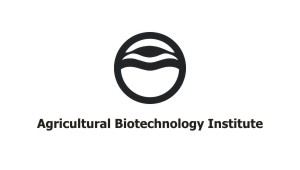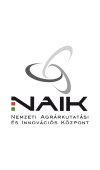ABC - Department of Genomics - Applied Wild and Farm Animal Genomics Group
Research Interests
The primary research field of the Applied Wild and Farm Animal Genomics Group is mammalian and honey bee genetics and genomics. Within this topic our main goal is the genome sequencing of native domestic and wild animals, and the use of genome sequences for marker development. Genetic markers can be used for individual identification of specimens, and in the case of domestic animals for development of genetic diagnostics tools for the control of breeding stocks.
Current Research Projects
- Mangalica Genome Project – Porcine genomics and genetics
- Red deer genome project
- Apicultural genomics and getetics
- Genetic monitoring of carnivores
- Genetic monitoring of Eurasian Woodcock
Mangalica Genome Project – Porcine genomics and genetics
Mangalica is an old Hungarian breed, its protection is a national priority supported and regulated by the Hungarian Ministry of Agriculture. For the research related to the mangalica, the MANGFOOD research consortium has been established by six participants (National Agricultural Research and Innovation Center, Research Institute for Animal Breeding, Nutrition and Meat Science, Central Environmental and Food Science Research Institute, Biomi Ltd., Wessling Magyarország Ltd., Olmos & Tóth Ltd.) that is supported by the National Development Agency.
As part of the Agricultural Genomics Group we have created and maintained a blood and tissue biobank where thousands of samples mainly from mangalica and other domestic animals can be found. These can serve as sources for DNA and RNA isolates to help research projects for the members of the consortium. Three male mangalica and a duroc specimen has been sequenced using HiSEQ 2000 technology by our partners. 11 Gbp of mangalica sequence has been aligned on the pig genome using bioinformatics methods. According to the alignments 11 thousand structural differences have been found between the mangalica and the reference genome. The mangalica genome is compared to other breeds to identify the structural differences. These can help to create and evaluate DNA tests that can serve as biomarkers to determine the quality and quantity of meat in food products using PCR methods.
Using these results our group is working to find new markers for other pig breeds and wild boar.
Red deer genome project
In cooperation with the University of Kaposvár the specification of the genome sequence of the red deer has been started. The genome of a male red deer from the Game Management Landscape Center of the University of Kaposvár has been sequenced using the HiSEQ 2000 technology. The 22 Gbp of acquired data was de novo assembled and while there is no red deer reference genome to be found, our sequences were rearranged to chromosome sequences using deer genome and cattle chromosome synthenia. Firstly the mitochondrial genome has been specified and published.
The tandem repeats (microsatellites) in the red deer genome have been identified and new sex chromosome markers development is on its way at the moment.
Apicultural genomics and getetics
Our team plans to benefit from the bioinformatics and laboratory experience gained so far in the field of bee genetic and genomic research. The project is carried out with the help of experienced beekeepers, bee breeders and universities. The research is commissioned by the Hungarian Bee Keeping Association. The genome of five bee specimen have been sequenced using the Illumina HiSEQ 2000 technology. Using bioinformatics methods 22 Gbp data has been fitted on the bee reference genome. During this 17 million structural differences have been found between the bee genomes.
Firstly the mitochondrial genomes have been specified and the differences examined to explore the diagnostic variations between the European and Asian honey bee. We are working on the development of markers that can differentiate between the two honeybee species, and apiary products produced by them, using real-time PCR method.
Genetic monitoring of carnivores
Joined to the monitoring of Hungarian big carnivore species, in cooperation with the Institute for Wildlife Conservation of the Szent István University and the Bükk National Park genetic monitoring investigations are made using various animal tissues as samples, mainly fur and fecal samples. The monitored species are 1) gray wolf/dog/golden jackal 2) wild cat/domestic cat species complex 3) Eurasian lynx 4) brown bear. Multiplex reactions are assembled and optimized using STR markers (microsatellites) for genotyping. The unique STR profiles are used to individual recognition of specimens, and the minimum number of individuals was also calculated. If the needed sample quantity is reached, the genetic diversity and the kinship of various specimen will be assessed.
Genetic monitoring of Eurasian Woodcock
Joined to the Hungarian monitoring program of the Eurasian Woodcock, in cooperation with the Institute for Wildlife Conservation of the Szent István University genetic monitoring investigations are carried out on the collected tissue samples. Multiplex reactions are assembled and optimized using STR markers (microsatellites) for genotyping. The unique STR profiles are used to individual recognition of specimens, and genetic diversity and genetic structure analyses were carried out.
Staff




Publications
2017
Frank K, Miró K, Nagy T, Marincs F (2017) Development of a PCR-based DNA marker for Glu-1By alleles in the old Hungarian Bánkúti wheat. Molecular Breeding 37: 120. doi: 10.1007/s11032-017-0719-4 link
Frank K, Bleier N, Tóth B, Sugár L, Horn P, Barta E, Orosz L, Stéger V (2017) The presence of Balkan and Iberian red deer (Cervus elaphus) mitochondrial DNA lineages in the Carpathian Basin. Mammalian Biology 86: 48-55. doi: 10.1016/j.mambio.2017.04.005 link
2016
Barta E, Bánfalvi Zs, Havelda Z, Hiripi L, Jeney Zs, Kiss J, Kolics B, Marincs F, Silhavy D, Stéger V, Várallyai É (2016) Agricultural genomics: an overview of the next generation sequencing projects at the NARIC - Agricultural Biotechnology Institute in Gödöllő. Hungarian Agricultural Research 25(2): 10-21.
Fábián R, Kanizsai B, Frank K, Bordán J, Kovács A, Egerszegi I, Oláh J, Stéger V, Bodó Sz (2016) Szarvatlan gidák ivarának meghatározása PCR segítségével. Állattenyésztés és Takarmányozás 65(1): 84-89.
Frank K, Barta E, Bana ÁN, Nagy J, Horn P, Orosz L, Stéger V (2016) Complete mitochondrial genome sequence of a Hungarian red deer (Cervus elaphus hippelaphus) from high-throughput sequencing data and its phylogenetic position within the family Cervidae. Acta Biologica Hungarica 67(2): 133-147. doi: 10.1556/018.67.2016.2.2 link
2014
Molnár J, Nagy T, Stéger V, Tóth G, Marincs F, Barta E (2014) Genome sequencing and analysis of Mangalica, a fatty local pig of Hungary. BMC Genomics 15: 761. doi: 10.1186/1471-2164-15-761 link
Szabolcsi Z, Egyed B, Zenke P, Pádár Zs, Borsy A, Stéger V, Pásztor E, Csányi S, Buzás Zs, Orosz L (2014) Constructing STR Multiplexes for Individual Identification of Hungarian Red Deer. Journal of Forensic Sciences 59(4): 1090-1099. doi: 10.1111/1556-4029.12403 link
2013
Koppányné Sz E, Ujhelyi G, Jánosi A, Mohr A, Szántó-Egész R, Dallmann K, Micsinai A, Zsolnai A, Egerszegi I, Anton I, Tóth G, Molnár J, Stéger V, Marincs F, Tóth P, Rátky J (2013) PCR sokszorozásra alkalmas DNS kivonása különböző mangalica termékekből. Élelmiszer - Tudomány Technológia 1: 12-17.
Koppányné Sz E, Ujhelyi G, Jánosi A, Mohr A, Szántó-Egész R, Dallmann K, Micsinai A, Zsolnai A, Egerszegi I, Anton I, Tóth G, Molnár J, Stéger V, Marincs F, Tóth P, Rátky J (2013) Mangalica termékek kimutatására alkalmas real-time PCR módszer fejlesztése. Élelmiszer - Tudomány Technológia 3: 14-20.
Marincs F, Molnár J, Tóth G, Stéger V, Barta E (2013) Introgression and isolation contributed to the development of Hungarian Mangalica pigs from a particular European ancient bloodline. Genetics Selection Evolution 45: 22. doi: 10.1186/1297-9686-45-22 link
Molnár J, Tóth G, Stéger V, Zsolnai A, Jánosi A, Mohr A, Szántó-Egész R, Tóth P, Micsinai A, Rátky J, Marincs F (2013) Mitochondrial D-loop analysis reveals low diversity in Mangalica pigs and their relationship to historical specimens. Journal of Animal Breeding and Genetics 130(4): 312-320. doi: 10.1111/j.1439-0388.2012.01014.x link
Semsey S, Jauffred L, Csiszovszki Z, Erdőssy J, Stéger V, Hansen S, Krishna S (2013) The effect of LacI autoregulation on the performance of the lactose utilization system in Escherichia coli. Nucleic Acids Research 41(13): 6381-6390. doi: 10.1093/nar/gkt351 link
Zsolnai A, Tóth G, Molnár J, Stéger V, Marincs F, Jánosi A, Ujhelyi G, Koppányné Szabó E, Mohr A, Anton I, Szántó-Egész R, Egerszegi I, Sipos R, Dallmann K, Tóth P, Micsinai A, Brüssow K-P, Rátky J (2013) Looking for breed differentiating SNP loci and for a SNP set for parentage testing in Mangalica. Archiv für Tierzucht 56(19): 200-207. doi: 10.7482/0003-9438-56-019 link
2010
Stéger V, Molnár A, Borsy A, Gyurján I, Szabolcsi Z, Dancs G, Molnár J, Papp P, Nagy J, Puskás L, Barta E, Zomborszky Z, Horn P, Podani J, Semsey Sz, Lakatos P, Orosz L (2010) Antler development and coupled osteoporosis in the skeleton of red deer Cervus elaphus: expression dynamics for regulatory and effector genes. Molecular Genetics and Genomics 284(4): 273-287. doi: 10.1007/s00438-010-0565-0 link
2009
Borsy A, Podani J, Stéger V, Balla B, Horváth A, Kósa JP, Gyurján I, Molnár A, Szabolcsi Z, Szabó L, Jakó E, Zomborszky Z, Nagy J, Semsey Sz, Vellai T, Lakatos P, Orosz L (2009) Identifying novel genes involved in both deer physiological and human pathological osteoporosis. Molecular Genetics and Genomics 281(3): 301-313. doi: 10.1007/s00438-008-0413-7 link
2008
Villányi Z, Gyurján I, Stéger V, Orosz L (2008) Plaque based competitive hybridization. Journal of Biomolecular Screening 13(1): 80-84. doi: 10.1177/1087057107310876 link
2007
Gyurján I, Molnár A, Borsy A, Stéger V, Hackler L, Zomborszky Z, Papp P, Duda E, Deák F, Lakatos P, Puskás L, Orosz L (2007) Gene expression dynamics in deer antler: mesenchymal differentiation toward chondrogenesis. Molecular Genetics and Genomics 277(3): 221-235. doi: 10.1007/s00438-006-0190-0 link
Molnár A, Gyurján I, Korpos E, Borsy A, Stéger V, Buzás Z, Kiss I, Zomborszky Z, Papp P, Deák F, Orosz L (2007) Identification of differentially expressed genes in the developing antler of red deer Cervus elaphus. Molecular Genetics and Genomics 277(3): 237-248. doi: 10.1007/s00438-006-0193-x link

